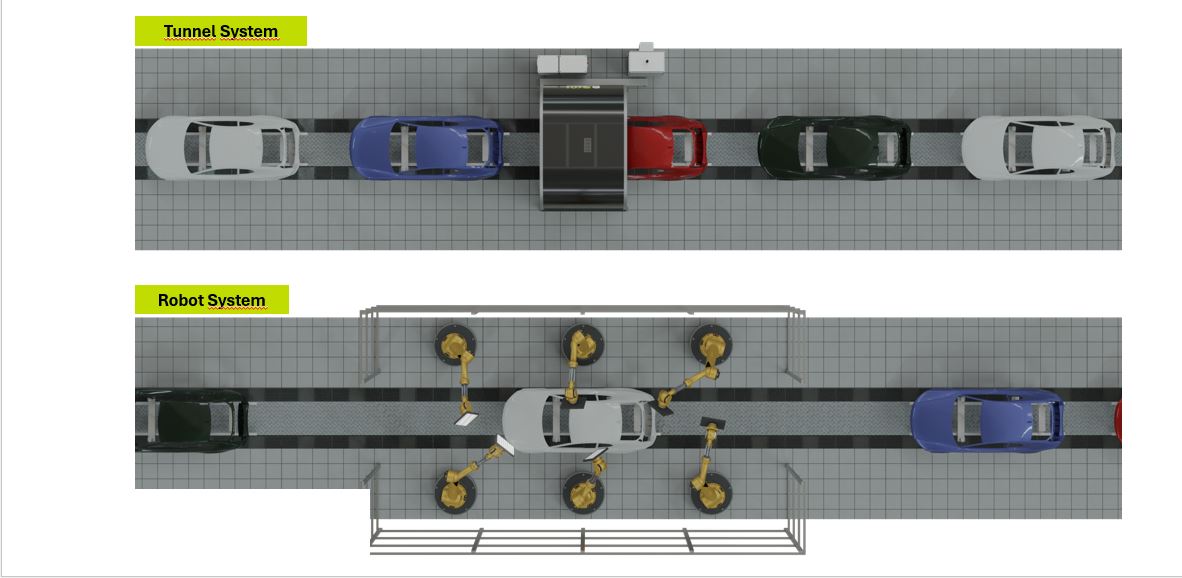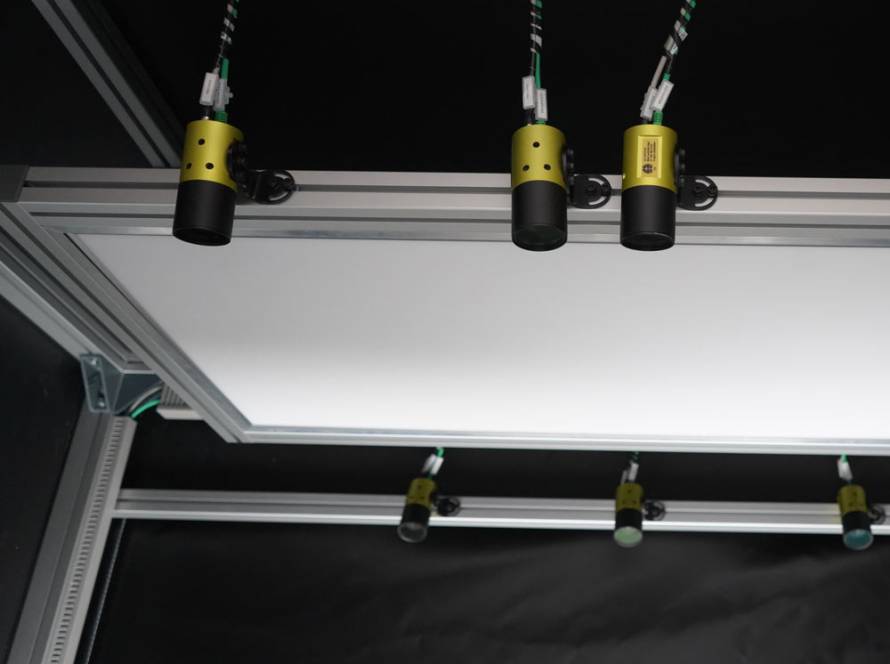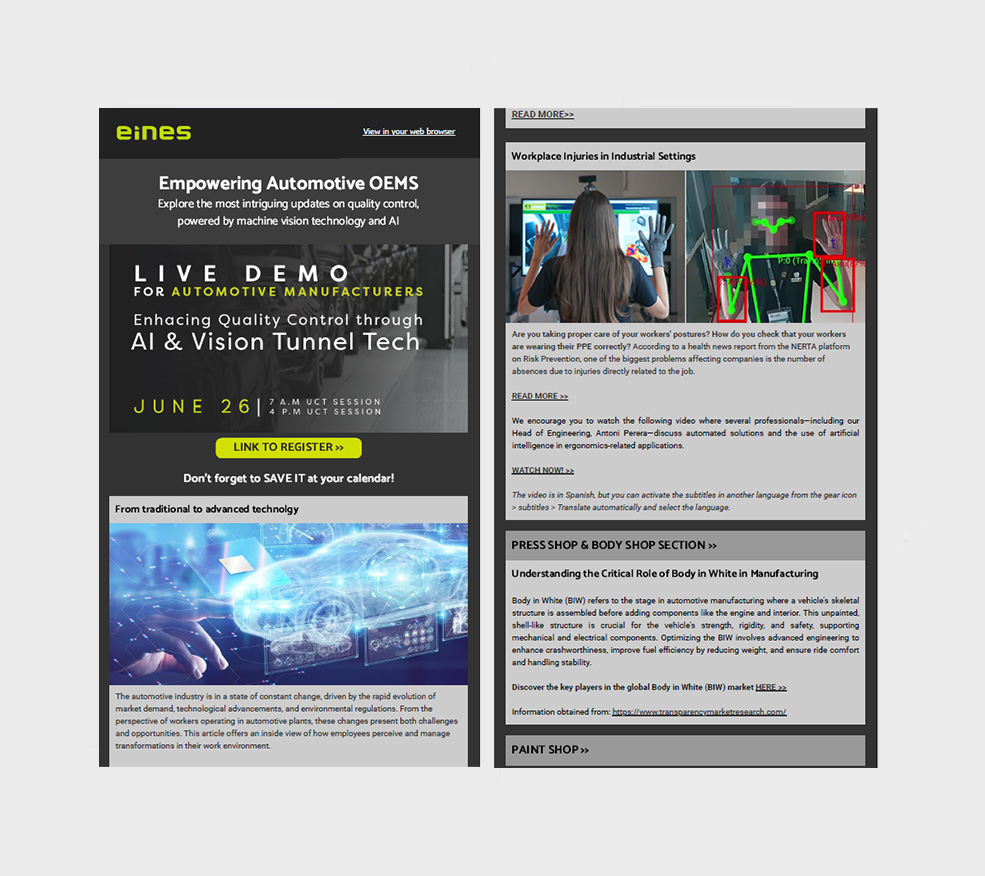Today, we are sharing a particularly interesting blog for those looking to optimize the performance of their automotive plants with automated systems. Metrology tasks (precise measurement of dimensions and alignments) and paint inspection (detection of surface defects) play a fundamental role in ensuring a flawless product. Nowadays, two technologies stand out for carrying out these processes automatically: vision tunnels and inspection robots.
Before working with us, many of our clients have asked: What are the advantages of vision tunnels compared to robots for quality inspection? Which system is more suitable for my industry?
In this post, we will explore both systems’ advantages, disadvantages, and similarities so you can decide which one best suits your industrial needs.
The Origin of Vision Tunnels
One of the most frequent questions is: Are vision systems as precise as robots? When facing new technologies, it is expected to have doubts about their detection capacity and how they might affect quality control.
Vision tunnels have been in development for approximately 20 years. As a curious fact, Eines was one of the pioneering companies in this technology. This means that, in terms of precision, tunnels are as reliable as robotic sensors for detecting defects after many years of experience.
Differences Between Vision Tunnels and Robotic Systems
Vision tunnels offer key benefits that professionals in the automotive sector value highly:
- They require little space on the production line: The tunnel adapts to the size of the cars being produced… only a little extra space on the sides is needed to place the tunnel. In contrast, robots (depending on whether they are static or move laterally) need more space. Generally, a tunnel requires no more than approximately 25m².
- Inline inspection and speed: Tunnels are designed to inspect parts on the production line without interrupting the flow, allowing for the analysis of complete surfaces in less time. They can inspect almost 100% of the surface with maximum precision thanks to their fixed structure. Although efficient, robots depend on the robotic arm’s mechanical movement (a minimum of 3 seconds that can be lost in the movement) to cover each point of the part. This implies longer processing times and potential deviations due to positioning errors or mechanical wear.
- Easy installation: The logistics for tunnels are comparatively minimal. This is because robots require multiple components and subcontractors for their installation, such as sensors, fencing systems, and leveling. For this reason, and due to their stationary nature, tunnels can be installed in about two weekends without needing to stop production or wait for periods when production halts.
- Lower maintenance costs: Tunnels require hardware such as cameras, lights, and computers, and since they are fixed systems with no moving parts, they have lower maintenance requirements and more excellent durability. There is no exposed wiring or moving parts, reducing the likelihood of breakages or unexpected accidents. Additionally, their installation and calibration are performed just once, facilitating operability. Due to mechanical wear, robots require periodic maintenance, position adjustments, and recalibrations.
- Adaptability and scalability: Tunnels can adapt to different types of parts and vehicle models without modifying their physical structure (though it may only be necessary to add a few more cameras). Robots require reprogramming and, in some cases, changes to the design of their arms or tools to adapt to new parts.
But… What About Precision and Detection? Tunnels or Robots?
Regarding defect detection and measurement, both systems (robots and vision tunnels) offer a precision range of 80-99%. The main difference lies in the number of robots needed to perform the same task as a tunnel: a tunnel is equivalent to about four robots (2 on each side of the vehicle) in the case of paint inspection. In the case of metrology, generally, each robot can measure about 20 sections… so four robots could measure 80 sections, while the tunnel can measure hundreds of sections.
Robots are limited to specific detection points, while tunnels operate continuously alongside the car. Although robots can be installed with a transverse axis for greater mobility and to perform detections in motion, this option can significantly increase costs and create blind spots or inconsistencies in coverage. However, taking advantage of robots, they can mark defects, making it easier for operators to identify the areas to correct.
Production Cycle and Auto-Repair
Regarding cycle times, tunnels take advantage of the car’s movement through the conveyor, while a robot needs at least 3 seconds to move between points. However, both systems allow the transfer of generated data to subsequent phases to make adjustments and repairs efficiently.
An additional benefit of vision tunnels is accessing a historical archive of images, facilitating traceability, and analyzing past defects.
Conclusion
Both vision tunnels and robots are highly effective technologies for quality control in automotive plants.
Although inspection robots have been used for years in the automotive industry, advances in artificial vision have positioned vision tunnels as a competitive solution with numerous advantages for tasks such as quality control in metrology and paint inspection. Their ability to work quickly, precisely, and continuously, along with low operating costs and high adaptability, make them the ideal option for modern manufacturing.
The choice between one and the other will depend on your plant’s specific needs, production requirements, and available budget. If you want more details or need personalized advice, don’t hesitate to contact us!






